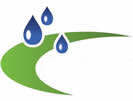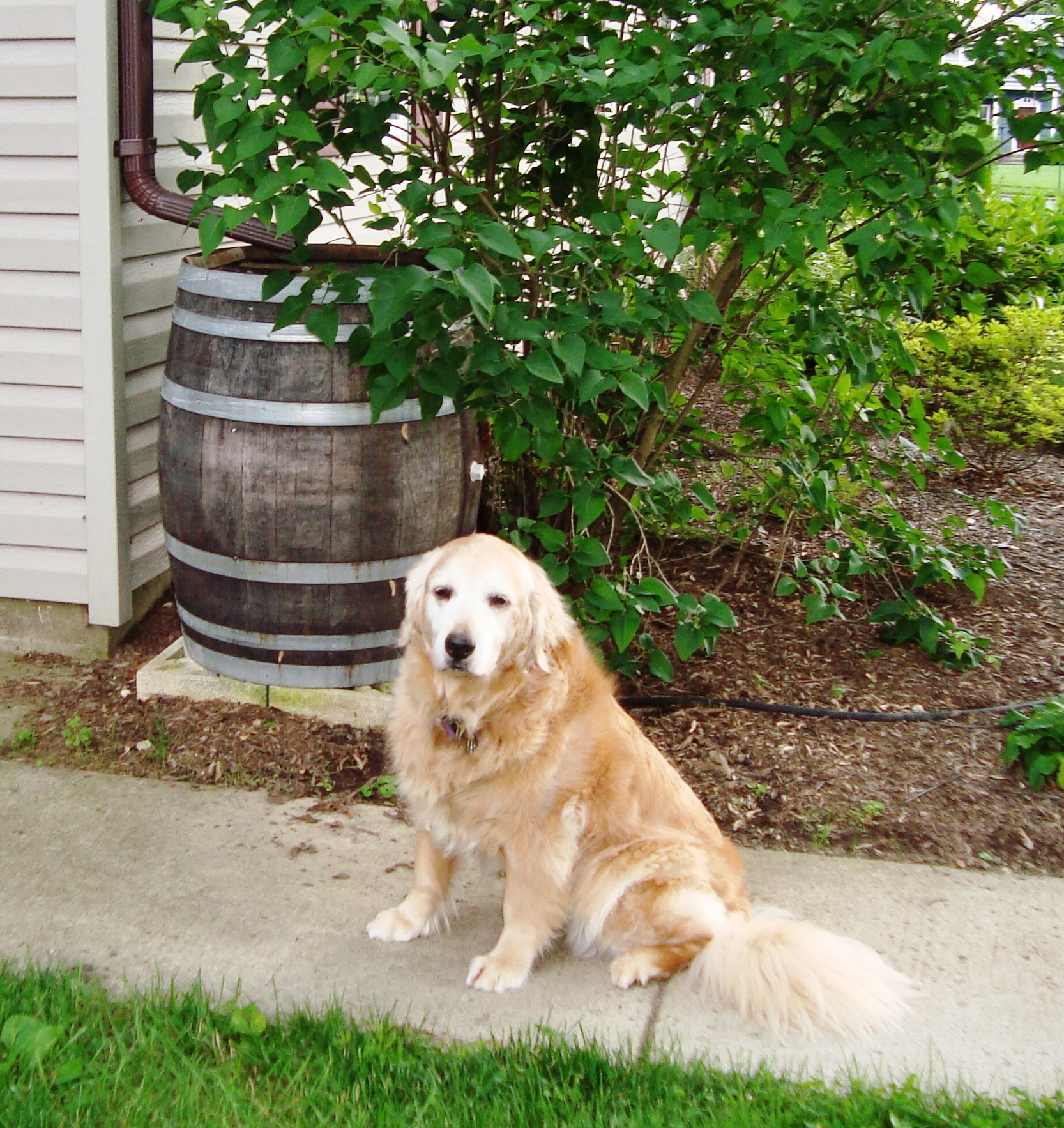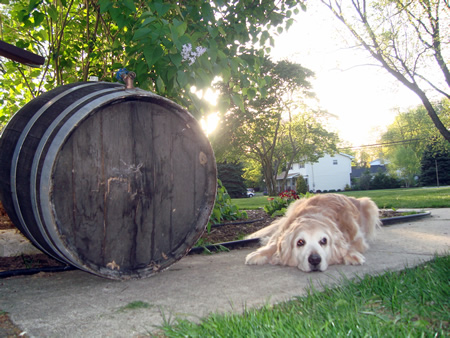Projects & Programs - Rain Gardens & Rain Barrels
| Why Rain Barrels |
Take an active role in recycling
rainwater - install a rain barrel at your house! A
rain barrel is placed under a gutter's downspout next to a house to
collect rainwater from the roof. The rain barrel holds
about 50 gallons of water which can be used to water gardens and for
other uses. Harvesting rainwater has many benefits including
saving water, saving money on your bill, and preventing basement
flooding. By collecting rainwater, homeowners are also helping
to reduce flooding and pollution in local waterways. When rainwater runs off of hard surfaces like rooftops, driveways, roadways,
parking lots, and compacted lawns, it carries with it pollution to our
local waterways. Harvesting the rainwater in a rain barrel is
just one of the ways homeowners can reduce rainwater from running off
their property and possibly causing pollution and flooding problems in
local waterways.
Rain Barrel Workshop, NJDEP, Trenton, NJ; May 2010
Dear Project Partners:
I would like to thank all of you for your help with the Rutgers Cooperative Extension (RCE) Water Resources Program’s Rain Barrel education and outreach effort. Since 2009, we have distributed over 3,000 rain barrels through our various programs, allowing New Jersey residents to harvest over 4.2 million gallons of stormwater per year. While these programs have been a lot of fun and shown significant impact in raising awareness and changing behavior, the time has come for us to sunset this effort. Unfortunately, funding to support the program has dwindled over the years, making it impossible for the RCE Water Resources Program to continue to be a supplier of rain barrels and rain barrel programming. We hope you all will continue your efforts to work with New Jersey residents to harvest rainwater. Good luck with all your endeavors.Sincerely,
Christopher C. Obropta, Ph.D., P.E., Extension Specialist in Water Resources, and the entire RCE Water Resources Program
June 22, 2014
Frequently Asked Questions (FAQs)
What do rain barrels typically look like?
Usually a rain barrel is a 55-gallon recycled food grade barrel that is retrofitted into a rain barrel. See the following example:
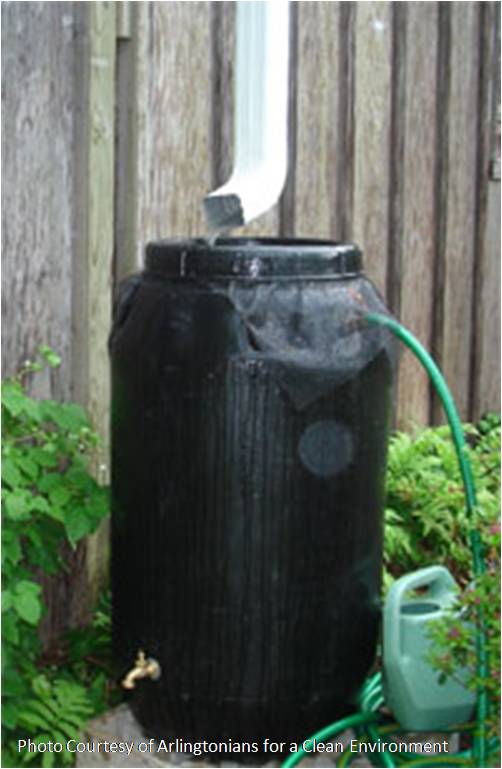
NOTE: Color of the barrel and spigot style may vary.
How do I install my rain barrel after I bring it home?
Follow the five steps outlined in the rain barrel brochure.
What if there's a heavy storm and my rain barrel overflows?
An overflow hose adapter is being installed in each rain barrel at
the "Build a Rain Barrel" workshops. The overflow hose
adapter can attach to a garden hose so that when the rain barrel
fills
up, the overflow water can drain to a nearby garden or lawn area.
In addition to the overflow hose adapter, a manual or automatic
diverter can be purchased and installed on the gutter to divert
the rain water down the gutter like it would nornally do after the rain
barrel has reached its capacity.
Various online store carry both manual and automatic downspout diverters. The price range of a manual downspout diverter ranges between $15 to $40, and the price range of an automatic downspout diverter ranges between $20 to $50 and even higher.
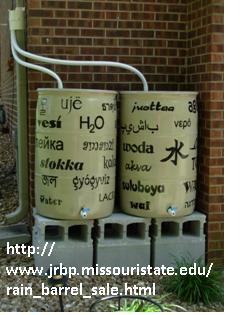
A photograph of an automatic diverter.
What defense will my rain barrel have against mosquitoes?
You can purchase mosquito dunks, which are made from organic material that prevent mosquito larvae from forming. Another option would be to add a couple of tablespoons of vegetable cooking oil, which will not hurt your plants. The oil will float on the water's surface and suffocate the mosquito larvae. If that idea does not appeal, go to a nursery or garden supply store and see if they have ”summer horticulture oil."
Do not install your rain barrel without a garden hose. The open overflow hole will allow mosquitoes in.
Direct your garden hose to a garden area, lawn, or some distant runoff area away from the house.
My roof is small, is it even worth it for me to have a rain barrel?
Yes! For an 800 square foot roof area that is being drained into
one downspout gutter, 500 gallons of water will come off your roof in
an one-inch rain storm. If your entire neighborhood installs a
rain barrel, it may have an impact on flooding and water pollution
within your community.
Are there ways that I can decorate or disguise my rain barrel?
Yes! Lightly sand the exterior of the barrel with
sandpaper to get rid of the waxy coat on the barrel to ensure that a
paint primer has something to stick to. After sanding,
immediately spray the primer onto the barrel. After the primer
dries, you can paint the barrel. If you want to hand draw designs
to the barrel, acrylic-based paints work best. If you want to simply
wish to change the color of the barrel, you can use Krylon (TM) Fusion
Spray Paint for plastics or Rust-Oleum (TM) Plastic Primer that can be
found at home centers and hardware stores. After the paint dries,
apply a coat or two of polyurethane to protect the paint. You can
also construct an enclosure for the rain barrel or hide it amongst your
landscape to make it less noticeable. A trellis with vine plants
can be placed around your rain barrel to blend it within your landscape.
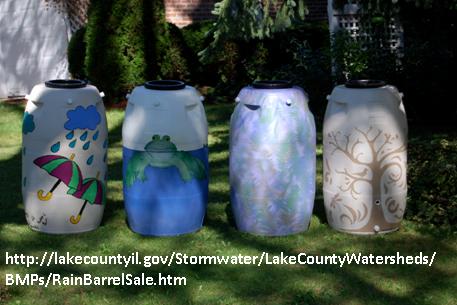
What can I do with the rain water that my rain barrel will harvest?
The water collected by your rain barrel could be used to water your flowers, shrubs, trees, and lawn. You could use the water to rinse your hands/feet, landscape tools, or even your muddy shoes. Please do not consume water collected in your rain barrel.
Is rain water good for plants?
Yes! Natural rainwater has proven more beneficial for plantings and gardens than tap water because it doesn’t contain chlorine and its slightly acidic pH assists nutrient availability in most lawns and gardens.
Would it be safe to use the water harvested from my rain barrel to water vegetable gardens?
There is no definitive answer to this question. It is best to avoid using the water from your rain barrel on plants grown for consumption until you receive results from taking a sample of water collected from your rain barrel and having it analyzed by your local water testing laboratory. If you decide to have this water sample analyzed, have it analyzed for contaminants such as zinc, lead, chromium, arsenic, polyaromatic hydrocarbons, fecal coliform, and E. coli. Once you confirm that the water is safe to use, it is best to use drip line irrigation to water the roots of the vegetables. Be sure to thoroughly clean the vegetables with potable water before consumption.
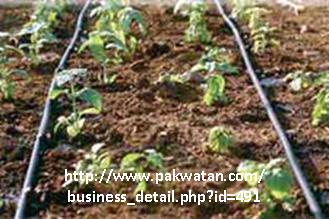
What precautions should be taken for your rain barrel?
Always keep the lid to your barrel tightly secured to avoid any
accidents involving children or animals. Please do not consume
water collected in your rain barrel.
Can I leave my rain barrel out in the winter months?
Why is Katie sad? Look at the bottom of her barrel!
It is best to bring your rain barrel indoors during the winter months, whether it is a wooden barrel or a plastic barrel.
However, it is acceptable to leave your rain barrel outside for
the winter as long as there is no water accumulating in the barrel. Simply
turn the barrel upside down and/or cover the barrel.
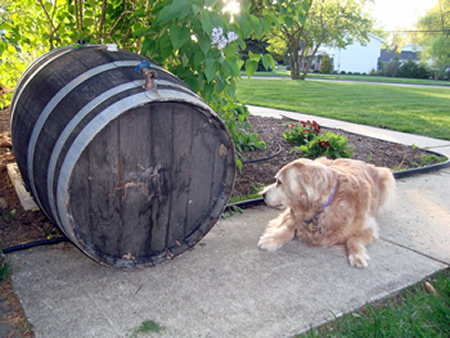
"See what happens when you don't drain my barrel and then you leave it out all winter?
Frozen water in
your barrel may cause the barrel to crack!"
I have previously applied a moss
killer on my roof, but I would like to collect water for my rain
barrel. What should I do?
Allow for a few (three or four) heavy rainfall events to occur before
collecting water for use with the rain barrel. To be cautious,
flush the first batch of water collected with the rain barrel. If
you would like a written confirmation that the water is safe, take a
sample of the water collected with the rain barrel to be analyzed at
your local water testing laboratory.
Is there a rain barrel brochure that I can download?
Yes! Feel free to download the rain barrel brochure by clicking here.
What else can I do to save water and prevent flooding and water pollution?
To save water, follow these tips:
- Use mulch around your plants to reduce watering needs.
- Install low-flow showerheads, faucet aerators, low-flow toilets, and other water saving devices at home.
- Plant native plants that require less water and less fertilizer than exotic ornamental plants.
To prevent flooding and water pollution, follow these tips:
- Redirect downspouts to areas where the water can soak into the ground.
- Install a rain garden on your property to capture rain water before it goes into storm drains and into nearby waterways (see Rutgers Cooperative Extension's Rain Garden Fact Sheet)
- Reduce the amount of hard surfaces on your property. Use gravel, mulch, or pervious pavers to help infiltrate water into the ground.
Contact
For more information contact your closest Environmental & Resource Management County Agent:
- Michele Bakacs ~ Middlesex & Union Counties
732-398-5274, bakacs@njaes.rutgers.edu
- Mike Haberland ~ Camden & Burlington Counties
609-265-5050, haberland@njaes.rutgers.edu
- Sal Mangiafico ~ Salem & Cumberland Counties
856-769-0090, mangiafico@njaes.rutgers.edu
- Amy Rowe ~ Essex and Passaic Counties
973-287-6360, rowe@njaes.rutgers.edu - Steve Yergeau ~ Ocean and Atlantic Counties
732-505-3671, yergeau@njaes.rutgers.edu
Also, for more information contact your Rutgers Cooperative Extension County Office.
Rain Barrel Train-the-Trainer Program:
Rain Barrel Train the Trainer workshops are run throughout out the year where participants are provided with:
- the skills to teach others how to build and install a rain barrel
- the knowledge to teach others about best management practices for water conservation and stormwater management
- the tools to conduct rain barrel activities in their communities
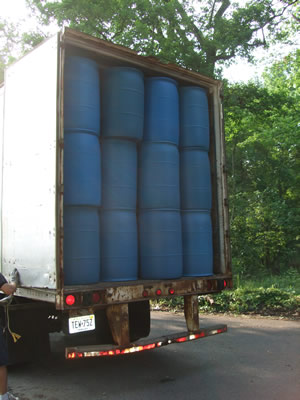
Barrel Delivery, New Brunswick, NJ
